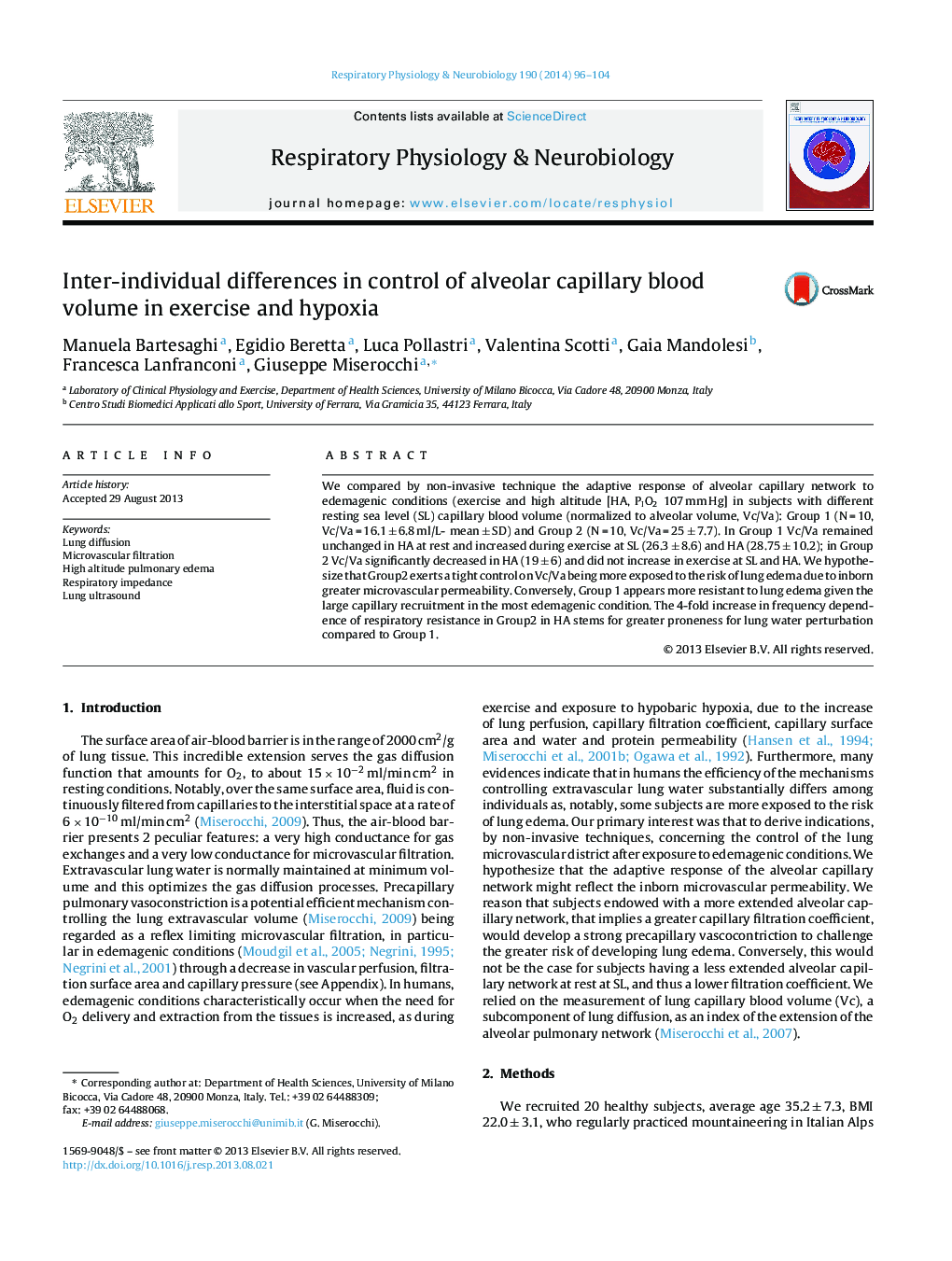| Article ID | Journal | Published Year | Pages | File Type |
|---|---|---|---|---|
| 2847120 | Respiratory Physiology & Neurobiology | 2014 | 9 Pages |
•We evaluated the change in pulmonary capillary blood volume during exercise at sea level and at high altitude.•We found an increase in some subjects but a decrease in others.•We measured the corresponding changes in respiratory reactance as index of lung fluid perturbation.•Reactance was significantly more negative when capillary blood volume decreased.•We conclude that subjects showing decrease in capillary blood volume are more prone to lung water perturbation.
We compared by non-invasive technique the adaptive response of alveolar capillary network to edemagenic conditions (exercise and high altitude [HA, PIO2 107 mm Hg] in subjects with different resting sea level (SL) capillary blood volume (normalized to alveolar volume, Vc/Va): Group 1 (N = 10, Vc/Va = 16.1 ± 6.8 ml/L- mean ± SD) and Group 2 (N = 10, Vc/Va = 25 ± 7.7). In Group 1 Vc/Va remained unchanged in HA at rest and increased during exercise at SL (26.3 ± 8.6) and HA (28.75 ± 10.2); in Group 2 Vc/Va significantly decreased in HA (19 ± 6) and did not increase in exercise at SL and HA. We hypothesize that Group2 exerts a tight control on Vc/Va being more exposed to the risk of lung edema due to inborn greater microvascular permeability. Conversely, Group 1 appears more resistant to lung edema given the large capillary recruitment in the most edemagenic condition. The 4-fold increase in frequency dependence of respiratory resistance in Group2 in HA stems for greater proneness for lung water perturbation compared to Group 1.
